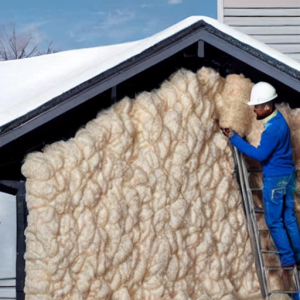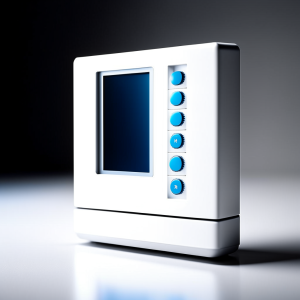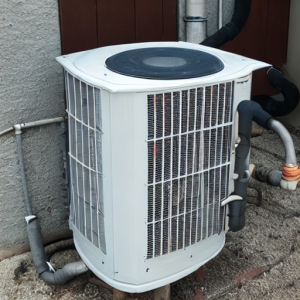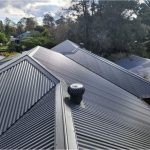Transform Your Home into a Cozy Winter Retreat While Cutting Heating Expenses
As the frosty winter season descends, the importance of finding comfort in the warmth of your home becomes even more crucial. However, soaring heating bills can pose a significant challenge for those aiming to maintain their budget. Luckily, there is a variety of energy-saving techniques that can help you create a snug winter oasis without straining your finances. In this article, you will uncover actionable, practical tips and proven strategies that will keep your living space warm and welcoming, all while ensuring your energy costs remain manageable throughout the cold months.

Enhance Your Home’s Energy Efficiency by Identifying and Sealing Air Leaks
Many homeowners are unaware that a significant amount of heat escapes through unnoticed air leaks. By taking the time to locate and seal these leaks, you can dramatically boost your home’s energy efficiency and reduce your heating bills. This detailed guide provides you with effective strategies to identify and seal air leaks around key areas such as vents, windows, and doors:
- Windows:
- Inspect for Drafts: On blustery days, make it a point to thoroughly check the edges of your windows for any drafts. Utilizing a candle or incense stick can help you detect subtle air movements that indicate leaks, allowing you to accurately identify areas that need your attention.
- Apply Weatherstripping: Use weatherstripping materials—like adhesive-backed foam or V-strip—to create a snug seal around window frames. Selecting the right kind of weatherstripping according to your window style is vital for effective insulation and optimizing energy savings.
- Doors:
- Check for Gaps: Carefully examine the edges of your doors for visible gaps that may allow cold air to seep into your home. A well-lit room during the evening can help reveal any drafts through these openings, making them easier to identify and fix.
- Install Door Sweeps and Weatherstripping: Place door sweeps at the base of doors to effectively block drafts and apply self-adhesive weatherstrips along the sides to seal any gaps that could undermine your energy efficiency.
- Vents and Ducts:
- Seal Ductwork: Ensure your ductwork is sealed tightly to prevent warm air from escaping into unconditioned spaces. Using a mastic sealer or foil tape can effectively secure any loose connections, thereby improving overall system performance.
- Install Vent Covers: Magnetic or adhesive vent covers can effectively manage airflow, minimizing drafts in less frequently used rooms while maintaining comfort in the more occupied areas of your home.
- Caulking and Sealant:
- Inspect Exterior Walls: Diligently check the outer walls of your home for cracks or holes. Applying caulk or sealant to fill these gaps will help stop air and moisture intrusion, significantly enhancing energy efficiency.
- Select the Right Sealant: It’s crucial to choose a sealant suitable for the location and material being treated. Silicone is ideal for flexible joints, while acrylic caulk is the best option for indoor use.
- Utilize Draft Stoppers:
- Place Along Door Bottoms: Use draft stoppers, also known as door snakes, to block cold air from entering through the bottom of doors. These fabric tubes can be easily positioned or removed as needed, providing an immediate solution to chilly drafts.
- Seek Professional Assistance:
- Consider Energy Audits: Hiring a professional to conduct an energy audit can be incredibly advantageous. Experts utilize advanced tools, such as thermal imaging cameras, to identify hidden leaks and offer tailored solutions specific to your home.
Conducting regular inspections and making timely repairs to discovered air leaks not only enhances your home’s overall comfort but also significantly improves energy efficiency. By proactively sealing these gaps, you can effectively reduce your energy bills and create a more inviting living environment throughout the winter months.
Utilize Natural Sunlight to Enhance Warmth and Atmosphere in Your Home
 Harnessing natural sunlight during the winter months can dramatically improve both the warmth and ambiance of your home. Here’s an in-depth exploration of effective strategies to make the most of daylight:
Harnessing natural sunlight during the winter months can dramatically improve both the warmth and ambiance of your home. Here’s an in-depth exploration of effective strategies to make the most of daylight:
- Daylight Utilization Strategies:
- Strategic Curtain Management: Keep curtains and blinds wide open during daylight hours to allow natural sunlight to pour into your living spaces. Position them to fully expose windows, enabling sunshine to penetrate further into your rooms and maximize warmth and brightness.
- Choose Sheer Fabrics: If privacy is a concern, consider sheer curtains that allow sunlight to filter in while still maintaining a degree of seclusion. The diffusion of light through sheer materials creates a warm and inviting atmosphere, enhancing the overall feel of your home.
- Solar Heat Gain:
- Understanding Solar Heat: Sunlight entering your home contributes to solar heat gain, especially through south-facing windows that receive the most sunlight during winter. This natural warmth can significantly benefit your space without incurring extra heating costs.
- Utilize South-Facing Windows: Focus on opening curtains and blinds on south-facing windows to maximize sunlight exposure, particularly in chillier climates where every beam of sunshine is invaluable.
- Nighttime Heat Retention:
- Close Curtains at Night: As temperatures drop in the evening, drawing your curtains and blinds helps insulate your home, preserving the heat accumulated throughout the day. Opt for heavier drapes or those with thermal lining for enhanced insulation.
- Invest in Insulated Window Treatments: Consider adding insulated drapes or shades to further minimize heat loss, effectively creating an additional barrier against cold air infiltrating your living space.
- Ambiance and Well-Being:
- Enhance Indoor Lighting: Natural sunlight not only warms your home but also improves the quality of indoor lighting, reducing reliance on artificial lighting during the day. This can lower energy consumption and positively affect your electricity bills.
- Incorporate Biophilic Design: Exposure to natural light has been linked to improved well-being. Allowing sunlight into your living areas can positively influence your mood and productivity levels, creating a more enjoyable home atmosphere.
- Window Maintenance:
- Clean Windows Regularly: Ensure that your windows are cleaned frequently to maximize sunlight entry. Regularly remove dirt and debris from both the interior and exterior to prevent obstructions that can limit natural light and warmth.
- Smart Home Technology:
- Consider Automated Window Treatments: Think about installing smart window treatments that can automatically open and close based on pre-set schedules, optimizing sunlight exposure and heat retention without manual intervention.
By incorporating these tactics into your winter routine, you can fully harness the benefits of natural sunlight, creating a warm and inviting atmosphere in your home while simultaneously enhancing energy efficiency. By optimizing your window treatments and understanding solar heat gain, you can significantly improve comfort and ambiance during the colder months.
Improve Energy Efficiency with Proven Insulation Techniques
 Proper insulation is crucial for minimizing heat loss and enhancing the overall energy efficiency of your home. Developing a thorough insulation plan that targets key areas such as the attic, walls, and basement will lead to a warmer and more cost-effective living environment during the harsh winter months.
Proper insulation is crucial for minimizing heat loss and enhancing the overall energy efficiency of your home. Developing a thorough insulation plan that targets key areas such as the attic, walls, and basement will lead to a warmer and more cost-effective living environment during the harsh winter months.
Begin your energy efficiency journey by assessing the insulation levels in your attic. Sufficient insulation in this area prevents heat from escaping through the roof and acts as a vital barrier against cold air. Various insulation materials, including fiberglass, cellulose, and foam board, offer differing effectiveness levels. Consulting with a professional can help you determine the most suitable insulation type and thickness for your attic, ensuring optimal performance and effectiveness.
Next, make sure your walls are adequately insulated to create a continuous thermal envelope around your home. Effective wall insulation helps regulate indoor temperatures by preventing heat from escaping through exterior surfaces. Insulation in exterior walls serves as a buffer against outdoor temperature fluctuations, making this a priority for boosting energy efficiency and overall comfort.
When insulating your basement, focus on both the walls and ceiling if applicable. Uninsulated basements, which are usually in close contact with the ground, can be significant sources of heat loss. Use materials like rigid foam boards or spray foam insulation to effectively insulate basement walls. If the basement ceiling remains unfinished, insulating it creates a thermal barrier between the basement and the living areas above, further enhancing energy efficiency and comfort.
When selecting insulation materials, consider the R-value, which measures heat resistance. Higher R-values indicate better insulation performance. However, the ideal R-value may vary based on factors such as climate, local building codes, and specific application areas, so it is essential to conduct thorough research accordingly.
In addition to proper insulation, ensure that your home is adequately sealed to prevent air leaks that can compromise insulation effectiveness. Avoid allowing conditioned air to escape through gaps around windows, doors, and other potential openings to maintain a comfortable environment in your home.
Investing in high-quality insulation not only helps retain warmth but also results in substantial savings on heating bills over time. The initial investment in insulation pays off by reducing the need for constant heating and enhancing energy efficiency throughout your home.
For a comprehensive evaluation, consider consulting insulation professionals or energy auditors. They can provide tailored recommendations based on your home’s unique characteristics, ensuring that your insulation strategy aligns with both your energy-efficiency goals and the specific requirements of your living space.
Optimize Your Home Comfort with a Programmable Thermostat
 Investing in a programmable thermostat is a proactive measure to optimize your home’s energy consumption while enhancing overall comfort. This smart device allows for flexible and automated temperature control, significantly improving your comfort levels and saving you money on energy costs.
Investing in a programmable thermostat is a proactive measure to optimize your home’s energy consumption while enhancing overall comfort. This smart device allows for flexible and automated temperature control, significantly improving your comfort levels and saving you money on energy costs.
Automated Temperature Adjustments: One of the standout features of a programmable thermostat is its ability to seamlessly adapt to your daily routine. By pre-setting temperature adjustments based on your schedule, you can ensure that your home is efficiently heated when you need it most, thereby avoiding unnecessary energy waste when you are away or asleep.
Energy Savings through Setback Settings: Programmable thermostats facilitate the use of setback settings during periods when you are away or sleeping. Lowering the temperature during these times helps prevent your heating system from overworking. According to the U.S. Department of Energy, reducing the temperature by just one degree can result in savings of up to three percent on home heating costs, which can accumulate significantly over time.
Tailored Comfort Levels: These devices allow you to customize temperature settings according to your specific preferences. You can program the thermostat to warm your home just before you arrive, ensuring a comfortable environment upon your return. This personalized approach enhances both energy efficiency and your overall satisfaction with your home’s climate.
Optimizing Heating Cycles: With a programmable thermostat, you can achieve more efficient heating cycles. The system operates with greater precision, reducing energy waste while maintaining consistent temperatures during occupied times and adjusting accordingly when it is unoccupied.
Smart Thermostats and Connectivity: The advancement of technology has introduced smart thermostats, which come with advanced functionalities like remote management via smartphone apps and integration with home automation systems. These features offer unparalleled control and energy management capabilities, allowing you to monitor and adjust your home’s temperature even when you’re away.
Installation and Compatibility: Installing a programmable thermostat is typically straightforward, with many models compatible with existing heating systems. However, it is essential to select a thermostat that fits your HVAC system and meets your home’s unique needs to maximize effectiveness and efficiency.
Considerations for Usage: While programmable thermostats are incredibly effective, careful programming is critical to maximizing their benefits. Understanding your daily schedule and adjusting the settings accordingly ensures that the thermostat operates in harmony with your lifestyle, enhancing energy savings while maintaining comfort.
Achieve Optimal Warmth with Layering Techniques for Winter Comfort
 To improve your comfort during winter, consider the simple yet effective approach of personal layering before adjusting the thermostat. This strategy not only assists in reducing energy costs but also contributes to a more pleasant indoor atmosphere, giving you greater control over your comfort levels.
To improve your comfort during winter, consider the simple yet effective approach of personal layering before adjusting the thermostat. This strategy not only assists in reducing energy costs but also contributes to a more pleasant indoor atmosphere, giving you greater control over your comfort levels.
Clothing as Insulation: Think of your clothing as an extra layer of insulation for your body. By wearing snug sweaters, thermal socks, and cozy slippers, you create a barrier against the cold, allowing for warmth without solely relying on heating systems. Choose materials like wool and fleece, which are renowned for their excellent insulating properties, ensuring you remain warm and comfortable.
Footwear Matters: Cold feet can significantly affect your comfort indoors. Investing in insulated slippers or warm socks is key to keeping your feet cozy. This simple adjustment not only enhances warmth but also reduces the need to raise the thermostat temperature to counteract chilly extremities, contributing to overall energy savings.
Layering for Bedtime Comfort: Extend the concept of layering to your bedding. Instead of immediately increasing the thermostat at bedtime, use multiple blankets to create layers on your bed. Combining lightweight and heavier blankets allows you to customize the layers to your comfort needs, creating a warm cocoon for sleeping that helps retain body heat while you rest.
Understanding the Science of Layering: Layering is a time-honored technique focused on conserving and capturing body heat. Each layer traps warm air, enhancing overall insulation. By mimicking the natural way our bodies regulate temperature, you can maintain comfort with less reliance on artificial heating, fostering a more sustainable approach to winter warmth.
Benefits Beyond Energy Savings: Mastering layering offers advantages that extend beyond energy conservation. It promotes an eco-friendly lifestyle by reducing the carbon footprint associated with higher heating demands. Additionally, layering fosters a sense of coziness and control over your environment, providing personalized warmth that enhances your overall comfort.
Seasonal Wardrobe Transition: As winter approaches, consider integrating additional insulating items into your wardrobe. Look for thicker fabrics, thermal undergarments, and accessories like scarves and gloves. By adapting your clothing to the changing seasons, you’ll be better equipped for a winter that is both comfortable and energy-efficient.
Mindful Thermostat Adjustments: Incorporating layering into your routine allows you to adjust the thermostat more thoughtfully. Even minor changes, such as lowering the temperature by a few degrees, become feasible when paired with the added warmth provided by layered clothing and bedding, leading to greater energy savings.
Ensure Optimal Performance with Regular Maintenance of Your Heating System
 A well-maintained heating system is crucial for achieving a comfortable indoor temperature throughout winter while minimizing energy expenses. Emphasizing regular maintenance and professional servicing ensures your heating system operates at peak efficiency, delivering consistent and reliable warmth when you need it most.
A well-maintained heating system is crucial for achieving a comfortable indoor temperature throughout winter while minimizing energy expenses. Emphasizing regular maintenance and professional servicing ensures your heating system operates at peak efficiency, delivering consistent and reliable warmth when you need it most.
Furnace Filter Maintenance: Begin by closely monitoring your furnace filters. These filters are essential for maintaining optimal airflow, which is vital for efficiency. Clean or replace filters regularly to prevent dust and debris buildup. Clogged filters restrict airflow, forcing the system to work harder and consume more energy, ultimately leading to increased heating costs.
The Role of Airflow in Efficiency: Understanding the relationship between airflow and heating efficiency is critical. Unrestricted airflow allows the system to distribute heat evenly throughout your home, reducing the workload on the furnace. This results in improved comfort and decreased energy usage, thus enhancing the overall efficiency of your heating system.
Professional Inspection and Servicing: Do not underestimate the value of professional assistance for your heating system. Schedule a thorough inspection and servicing before winter begins. Certified technicians can identify and resolve potential issues that may compromise system efficiency, ensuring you stay warm and comfortable during the colder months.
Preventive Maintenance Benefits: Investing in preventive maintenance pays off in the long run. It aids in the early detection and resolution of issues while extending the lifespan of your heating system. Routine inspections ensure all components are functioning properly, enhancing productivity and reducing the risk of unexpected breakdowns that could leave you in the cold.
Efficiency Upgrades: Consider upgrading your heating system for improved efficiency. Newer models often come equipped with advanced features designed to maximize energy efficiency. While the initial investment may seem significant, the long-term savings on energy bills and potential rebates make this a wise financial choice.
The Article Energy Hacks for a Budget-Friendly Cozy Winter Home Was Found On https://limitsofstrategy.com
The Article Budget-Friendly Energy Hacks for a Cozy Winter Home First Appeared ON
: https://ad4sc.com


I truly resonate with the idea of transforming our homes into cozy retreats during the winter months, especially when balancing warmth and energy expenses can be a tricky endeavor. This speaks to a growing awareness of sustainability in our everyday lives.
I love this topic! Every winter, I find myself battling with those heating bills, so I’m all for finding ways to cozy up without breaking the bank. Sealing air leaks is such a game-changer—it’s amazing how much heat can slip through those little gaps we don’t even notice!
It’s interesting how the discomfort of winter can actually highlight how much we take for granted the warmth of our homes. I really resonate with the point about air leaks; until I tackled the drafty spots in my own place, I didn’t realize just how much cold was sneaking in—and how hard my heating system was working to keep up. It felt like such a simple fix, yet sealing those leaks made a noticeable difference in my comfort levels and my monthly bill.
You make a valid point about how the discomfort of winter forces us to recognize the often invisible aspects of our homes. It’s striking to realize how much we overlook in our everyday lives, especially things like air leaks. Many people don’t think twice about those drafty spots until they feel the actual impact, both in chilly rooms and on the monthly heating bill.
Your insights into transforming our homes into cozy winter retreats while being budget-conscious are indeed relevant in today’s climate, both literally and figuratively. As we head into winter, the dual challenge of staying warm and managing energy costs becomes increasingly critical for many households. Your mention of sealing air leaks is particularly interesting; I’ve always been surprised by how many homeowners overlook this simple but effective measure. The reality is, even small gaps around windows and doors can significantly impact our heating efficiency — a lesson I learned the hard way during a particularly bitter winter a few years ago.
It’s great to hear that you found the tips on creating cozy winter retreats relevant. The challenge of keeping our homes warm without breaking the bank is something so many of us can relate to, especially when those chilly months roll around. You hit on a key point with sealing air leaks. It really is surprising how much impact those little gaps can have. I remember walking into a friend’s house one winter and feeling that unmistakable draft—it’s like the outdoors was waltzing right inside.
It’s so true—winter really does present us with both challenges and opportunities, doesn’t it? The idea of transforming our homes into cozy retreats while keeping a close eye on the budget adds a layer of creativity to the season. Your experience with air leaks is a perfect example; it shines a light on how the smallest changes can have a big impact.